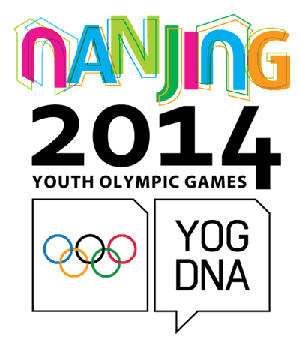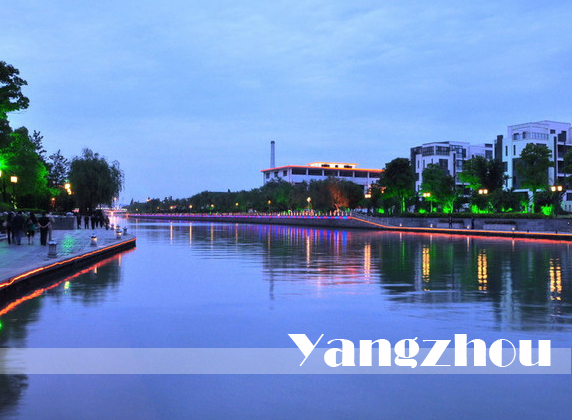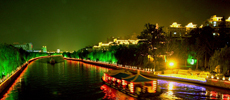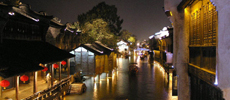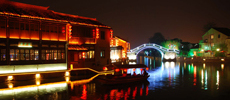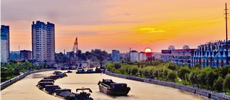Walk along the canal
By Shi Liwei,Zhao Jia( chinadaily.com.cn )
|
 |
|
To bring the old canal's application for World Cultural Heritage status to the public's attention, reporting on the Nanjing 2014 Youth Olympic Games, and to show the cultural achievements and cultural exchanges among youth from all over the world, Jiangsu's Provincial Party Committee's Internet Information Office will sponsor a "Walk along the canal and watch the Youth Olympic Games" activity with a "Nation-wide Internet media tour of Jiangsu". Handling the activity is the China Jiangsu Website, which is inviting journalists from all the major Internet media across the country to visit Jiangsu. |
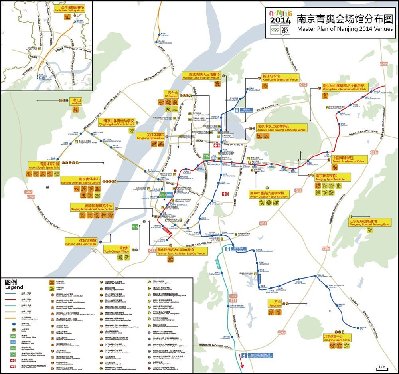 |
||||||
| 2nd Summer Youth Olympic Games opens in Nanjing | ||||||
| Suzhou’s part of Grand Canal retains tradition look | ||||||
| IOC president Thomas Bach to grace opening ceremony | ||||||
| Journalists gather at Yangzhou Double Museum | ||||||
| Search for the canal and watch the Youth Olympic Games | ||||||
| Food party at Youth Olympic Village | ||||||
| First opening ceremony rehearsal tests performers, thrills audience | ||||||
| City leaders inspect venues and agencies | ||||||
| Ding and Fan host pre-opening of Youth Olympic Village | ||||||
| Games launching point, says badminton superstar | ||||||
|
|
Mascot: In the name of the Nanjing 2014 Mascot, "Lele" literally means happiness in Mandarin and also refers to the sound of stones banging. In ancient times, people frequently banged stones as a form of entertainment when they quarried or built roads. Hence, other than joy and happiness, the word "le" also signifies a pioneering spirit. |
Songs: To draw wider participation, attention and support for the games, the Nanjing Youth Olympic Games Organizing Committee (NYOGOC) organized a worldwide Nanjing 2014 Theme Song Competition, whereby selected songs and music will be used to promote Nanjing 2014. Since the launch in December 2013, over 5,000 entries were received from around the globe. The theme song was selected and announced on June 27. | ||||
|
Medal: The medal for Nanjing 2014 is designed by Matej Čička, a 23-year-old sports fan from Slovakia. |
 | |||||
|
Slogan: Share the Games, Share our Dreams | ||||||
|
Uniform: The uniforms were designed and developed by 361 Degrees Group. The key pattern of the uniforms combined five Nanjing icons, including Nanjing's rosy dawn, the Qinhuai River, plum blossoms, Yunjin (silk brocade) and the Rain Flower Pebble. This reflects the profound cultural and historical background of Nanjing and symbolizes the courage and innovativeness of youth. The dividing curves represent the winding Qinhuai River and flying ribbon, which signify the youth and vitality of the ancient city. |
Torch: The Youth Olympic Games Torch - also known as the "Gate of Happiness" - was designed by Vatti Corporation, the design company for the games of the XXIX Olympiad in Beijing 2008 and the 16th Asian Games in Guangzhou 2010. | |||||
|
Emblem: The YOG emblem embodies and advocates the spirit of the Olympics. It reflects the richness of Chinese culture and accurately conveys the theme of Nanjing 2014. The word "NANJING" is formed with the outlines of the gate of the ancient Chinese Ming Great Wall and typical South China folk dwellings. These represent an inviting gateway, welcoming everyone to this jubilant, international youth event. | ||||||
|
 |
 | ||||||
|
Yangzhou is located in central Jiangsu Province at the intersection of the Yangtze River and the Beijing-Hangzhou Grand Canal. It sits within the Yangtze Delta Region, the most dynamic economic circle in China, and is an important port city where industry and trade prosper. |
|
| Economy: Yangzhou is an important Yangtze Delta Region city with major influence over North Jiangsu, South Shandong and East Anhui. More | |
| Tourism in Yangzhou: Yangzhou is rich in tourist attractions, boasting scenic rivers, architecture and gardens as well as a preserved ancient city from the Ming and the Qing Dynasties. More | |
| Yangzhou culture: Yangzhou's unique and colorful culture boasts the Yangzhou School of Learning, the Eight Eccentrics and Yangzhou Opera. More | |
| Food: Yangzhou is the birthplace of Huaiyang Cuisine. More | |
| Huaiyang cuisine: Huaiyang cuisine includes flavors from the middle and lower reaches of the Yangtze River and the Huaihe River Basin. More | |
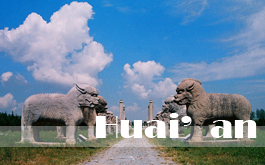 |
Located in the hinterland of Northern Jiangsu, Huai'an is adjacent to Yancheng to the east, Yangzhou to the south, Anhui Province to the west, and Lianyungang, Xuzhou and Suqian to the north. Its coordinates are 118°12' to 119°36' east and 32°43' to 34°06' north. More |
| Comprehensive conditions of economy: In 2010, the local GDP of Huai'an reached 131.5 billion yuan, which are 2.3 times, 2.8 times, 4 times and 5.3 times the figures in 2005. More | |
| Scenic spots: In Huai'an, there are more than 100 relic protection units at different levels. More | |
| Huai'an food: Huaiyang cuisine Huai'an and Yangzhou are the bases of Huaiyang cuisine, which is one of China's four major cuisines. More |
|
 |
|
Suzhou covers an 8,488-square-kilometer area, with the city proper accounting for 2,743 sq km, and has the cities of Zhangjiagang, Changshu, Taicang, and Kunshan, and the districts of Wujiang, Wuzhong, Xiangcheng, Suzhou New Hi-tech, and Gusu, and the Suzhou Industrial Park under its jurisdiction. |
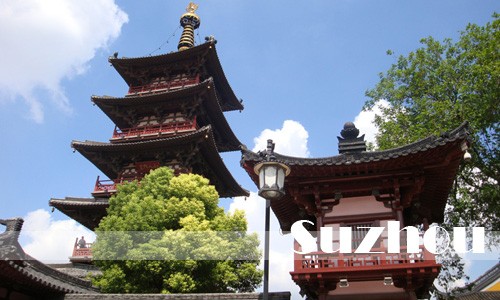 |
| Weather and Climate: The average annual temperature in Suzhou is 15.9 C. July reaches an average high of 28.2 C and January a low of 3.6 C. More | |
| Suzhou economy: Suzhou has the largest local economy in Jiangsu, accounting for 19.6 percent of the Province’s total GDP. More | |
| Suzhou tour: Classic canal scenes: Hanshan Temple, Shangtang and Pingjiang historic blocks. More | |
| Chinese opera: known as Kunqu, it originated in the Suzhou area, followed by later Suzhou Opera. More | |
| Suzhou cuisine: Suzhou cuisine is light in taste and sweeter than neighboring Yangzhou's Huaiyang cuisine. More |
|
 |
|
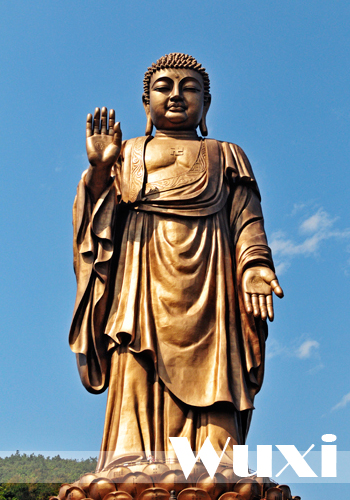 |
Wuxi is a city on the Yangtze River between Suzhou and Nanjing, and is located in the south of Jiangsu Province, half way between the cities of Shanghai and Nanjing, with Shanghai 128km to its east and Nanjing 183km to its west. More |
| Water Resources: There are more than 3,100 rivers with a total length of 2,480 kilometers in Wuxi.The total length of rivers in urban areas is 150 kilometers with a capacity of 8 million cubic meters. Taihu Lake is the center of the water network with an area of 2338 square kilometers and the average annual throughput is approximately 52 billion cubic meters. Wuxi is abundant in water resources. | |
| Economic development: Wuxi's national economy has maintained stable growth while its GDP ranks the first in Jiangsu. More | |
| It is said that long, long ago, the Jade Emperor ordered the Four Heavenly Guardians to send a lavish gift to the Lady Queen Mother on her birthday. In fact, the gift was a huge silver salver with 72 large emeralds and various jade sculptures in the shapes of birds and beasts. The Lady Queen Mother was quite excited with the gift, as were other immortals. Unfortunately, the Monkey King lost his temper at the birthday party, for he had not been invited. He beat everything, including the silver salver. As a result, the salver was broken, and the silver fell down through a hole like water and became Taihu Lake. The 72 emeralds became the 72 peaks distributed in the lake, the jade sculptured fish became the tasty whitebait and the sculptured birds became the mandarin ducks in the lake. | |
| Tour in Wuxi: Wuxi belongs to the sub-tropical maritime climate zone, with four distinct seasons. More | |
| Food and specialties: Wuxi Spareribs with Sugar and Vinegar, Wuxi Honey Peach, xiaolongbao (steamed buns), white shrimp from Taihu Lake, white fish, oil gluten, Dafu waxberry, Huiquan yellow rice wine. More |
|
 |
|
Nanjing is situated in the lower reaches of the Yangtze River. It borders the Yangtze River Delta to the east and the hilly areas of South Anhui to the west. It is adjacent to the water network of Taihu Lake in the south and the Jianghuai Plain in the north. More |
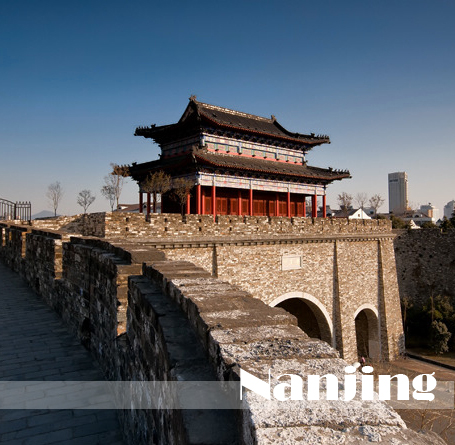 |
| Development of Nanjing: The 2013 Asian Youth Games and 2014 Youth Olympic Games will be held in Nanjing. International Olympic Committee (IOC) family members from 205 countries and regions will gather in Nanjing during these events, providing an excellent opportunity and platform to showcase Nanjing and China. More | |
| Tour in Nanjing: The center of Buddhist culture: Qixia Temple, Xuanzang Temple, Jiming Temple. More | |
| Cuisine restaurants: Nanjing Food-Stall Restaurant Founded in October 1994, this is the first restaurant to focus on Nanjing local cuisine catering. More | |
| Food in Nanjing: Nanjing's food and beverage industry has maintained both its unique local food tradition of Huaiyang cuisine and Qinhuai flavored snacks. More | |
| Life in Nanjing: Life in Nanjing is much slower and more relaxed than Beijing or Shanghai. Parks are found all around the city. Most are free and well-maintained. Locals love strolling and picnicking. More | |
| The center of Buddhist culture: Since the introduction and spread of Buddhism into China nearly 2,000 years ago, Nanjing has played a decisive role in the development of Buddhism in China. More |
|
 |
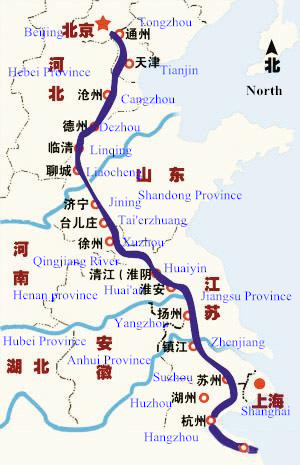 |
The Grand Canal was constructed back in the late Spring and Autumn Period (770-476BC). Each feudal nation built canals in each district in order to strength the communication with others. Canals connected with the natural waterways. The Grand Canal runs through Beijing, Tianjin, Hebei province, Shandong province, Jiangsu province and Zhejiang province and provides an important connection between the Yangtze River valley and the Yellow River valley, and other minor river systems. Now the cruising range stretches only for 883 kilometers, including 690 kilometres within Jiangsu Province, about two fifths of its total length. |
|
 | |
|
The Grand Canal's Application for World Cultural Heritage June, 2006 The Grand Canal was listed as the sixth tranche of national relic protection units. In December, the application for World Cultural Heritage was launched. Sep. 26, 2007 The State Bureau of Cultural Relics announced Yangzhou was the leading city to work for the Grand Canal's application for World Cultural Heritage. March, 2008 A working Conference for the Grand Canal Protection and Application for World Cultural Heritage was held in Yangzhou. 35 cities formed a league to work for the Grand Canal’s application for World Cultural Heritage. September, 2009 Yangzhou first issued its Conservation Program of the Grand Canal (Yangzhou section). |
Sep 26, 2012 On behalf of the urban league of the Grand Canal, Yangzhou issued a proposal and formulated, signed and abided by the Association Agreement of the Protection of the Grand Canal. July, 2013 Yangzhou initiated the monitoring and early warning platform of the Grand Canal (Yangzhou section) Sep.16-26, 2013 ICOMOS designated two experts to assess and evaluate sites in China. July, 2014 Shan Jixiang, the then director of the State Bureau of Cultural Relics, first revealed that China planned to apply for World Cultural Heritage status in the Suzhou No.28 World Heritage Committee Conference. June 22, 2014 The Grand Canal was finally added to the World Heritage List during the 38th session of UNESCO's World Heritage Committee. |
|
 |
|
China Upgrades Locks on Section of Grand Canal China has earmarked 770 million yuan ($93 million) for upgrading the water locks on the northern Jiangsu province section of the 1,794-kilometer Beijing-Hangzhou Grand Canal. The project, involving $53 million in loans from the World Bank, includes improving five existing locks, and building five new ones in northern Jiangsu.The section, which stretches 404 km with 20 locks in operation in northern Jiangsu Province, handles nearly 100 million tons of freight annually, making it the busiest waterway in China after the Yangtze River. |
Protection is more important Yangzhou has developed a digital warning and monitoring management platform which is used in 27 cities and 31 heritage sites. On the premise of good protection of the Grand Canal, valuable and fully- functional heritage sites can be established as special exhibition sites or museums. A special cultural industry can be combined with the production of historic sites, entertainment and tours, for example, and the exhibition of archaeological sites is the highlight of Huai'an. |
|
 |
|
Yangzhou's ancient canal |
Ancient canal in Suzhou |
Ancient canal in Wuxi |
|
|
 |


